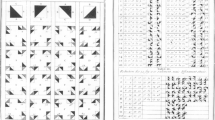Abstract
This paper presents a design strategy in which structural components are designed automatically by applying three types of knowledge: knowledge in a design standard; “textbook” knowledge of structural, material, and geometrical relationships; and knowledge representing designer-dependent design expertise. The design strategy selects from the designer-dependent knowledge source the behavior limitations—limit states of an object in a given stress state—to consider, translates the behavior limitations into a subset of corresponding standard requirements, generates a set of constraints from the requirements and the relations in the knowledge-base of “textbook” relationships, satisfies the constraints, and then checks the satisfaction of all remaining applicable requirements. By using this design strategy, it is possible to construct a knowledge-based design strategy that is standard independent, so that the same design process can be performed regardless of which design standard is explicitly represented.
The design strategy described has been implemented in a prototype knowledge-based system, SPEX, which has a blackboard architecture similar to, but much simpler than, that of HEARSAY. The blackboard represents the level of abstraction through which a component design progresses. The knowledge-base in SPEX consists of several knowledge sources that perform portions of the component design task. Control of the design process knowledge sources in SPEX is rule-based.
Similar content being viewed by others
References
Garrett, Jr., J.H., Fenves, S.J. (1986) SPEX—A Knowledge-Based Standard Processor for Structural Component Design, Technical Report R-86-157, Department of Civil Engineering, Carnegie Mellon University, Pittsburgh, PA, September
Rehak, D.R., Lopez, L.A. (1981) Computer Aided Engineering: Problems and Prospects, Civil Engineering Systems Laboratory Research Series (CESLRS) 8, Department of Civil Engineering, University of Illinois, Urbana-Champaign, IL, July
Stahl, F.I., Wright, R.N., Fenves, S.J., Harris, J.R. (1983) Expressing standards for computer-aided building design. Computer-Aided Des. V 15(6); 329–334, November
Howard, H.C. (1986) Interfacing databases and knowledge based systems for structural engineering applications, unpublished Ph.D. dissertation, Department of Civil Engineering, Carnegie Mellon University, Pittsburgh, PA
Lopez, L.A., Elam, S.L. (1984) SICAD: A Prototype Knowledge Based System for Conformance Checking and Design, Technical Report, Department of Civil Engineering, University of Illinois, Urbana-Champaign, IL
Fenves, S.J. (1966) Tabular decision logic for structural design. J Struct. Div. 92(ST6), 473–490, June
Fenves, S.J., Garrett, Jr., J.H. (1985) Standards representation and processing. In: Steel in Buildings, International Association of Bridge and Structural Engineers (IABSE), Zurich, Switzerland, pp. 107–114, September
Specification for the Design, Fabrication and Erection of Structural Steel for Buildings, American Institute of Steel Construction, Chicago, IL, 1980
Fenves, S.J., Garrett, Jr., J.H. (1986) Knowledge-based standards processing. Int. J. Artifi. Intell. Eng. 1(1), 3–14 April
Harris, J.R., Wright, R.N. (1980) Organization of Building Standards: Systematic Techniques for Scope and Arrangement, Building Science Series 136, National Bureau of Standards, Washington, DC, March
Nyman, D.J., Fenves, S.J. (1973) An Organizational Model for Design Specifications, Technical Report R73-4, Department of Civil Engineering, Carnegie Mellon University, Pittsburgh, PA, September
Howard, H.C., Fenves, S.J. (1983) Representation and Comparison of Design Specifications, Technical Report R-83-141, Department of Civil Engineering, Carnegie Mellon University, Pittsburgh, PA, March
Biegler, L.T., Cuthrell, J.E. (1985) Improved infeasible path optimization for sequential modular simulators—II: The optimization algorithm.Comput. Chemi. Eng. 9(1), 257–267
Schittkowski, K. (1982) Theory, implementation and test of a nonlinear programming algorithm. In:Optimization Methods in Structural Design (Eds. H. Eschenauer, N. Olhoff). University of Siegen, FR Germany, pp. 122–132, October
Garrett, Jr., J.H. (1986) SPEX User's Manual, unpublished Internal Department Report, Department of Civil Engineering, Carnegie Mellon University, Pittsburgh, PA
Carbonell, J. (1985) Framekit User's Manual, Carnegie Mellon University, Department of Computer Science, Pittsburgh, PA
Fenves, S.J., Wright, R.N. (1977) The Representation and Use of Design Specifications, Technical Note 940, National Bureau of Standards, Washington, DC
Erman, L.D., Hayes-Roth, F., Lesser, V., Reddy, D. (1980) The HEARSAY-II Speech-Understanding System: Integrating Knowledge to Resolve Uncertainty.Comput. Surv. 12(2), 213–253, June
Holtz, N.M. (1982) Symbolic Manipulation of Design Constraints—An Aid to Consistency Management, Technical Report DRC-02-12-82, Design Research Center, Carnegie Mellon University, Pittsburgh, PA, April
Author information
Authors and Affiliations
Rights and permissions
About this article
Cite this article
Garrett, J.H., Fenves, S.J. A knowledge-based standards processor for structural component design. Engineering with Computers 2, 219–238 (1987). https://doi.org/10.1007/BF01276414
Issue Date:
DOI: https://doi.org/10.1007/BF01276414




